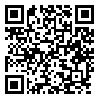Volume 14, Issue 3 (Autumn 2019)
jmed 2019, 14(3): 196-182 |
Back to browse issues page
Download citation:
BibTeX | RIS | EndNote | Medlars | ProCite | Reference Manager | RefWorks
Send citation to:



BibTeX | RIS | EndNote | Medlars | ProCite | Reference Manager | RefWorks
Send citation to:
Rezvani A, ajam A, panahishahri M, Mohammad pour H, Ramazani F. Investigating the Role of Virtual Social Networks and Attitude to them on Academic Buoyancy of Students in Birjand University of Medical Sciences. jmed 2019; 14 (3) :196-182
URL: http://jmed.ssu.ac.ir/article-1-1015-en.html
URL: http://jmed.ssu.ac.ir/article-1-1015-en.html
Abolghasem Rezvani * 

 , Aliakbar Ajam
, Aliakbar Ajam 

 , Mahmood Panahishahri
, Mahmood Panahishahri 

 , Hadi Mohammad pour
, Hadi Mohammad pour 

 , Fereydoon Ramazani
, Fereydoon Ramazani 




 , Aliakbar Ajam
, Aliakbar Ajam 

 , Mahmood Panahishahri
, Mahmood Panahishahri 

 , Hadi Mohammad pour
, Hadi Mohammad pour 

 , Fereydoon Ramazani
, Fereydoon Ramazani 


M.A. of Educational Research, Faculty of Educational and Psychology, Department of Educational Sciences, Payame Noor University, Tehran, Iran. , abolghasem.rezvani@gmail.com
Abstract: (5101 Views)
Abstract
Introduction: The purpose of this study was to investigate the role of virtual social networks and their attitude towards the students' academic buoyancy of Birjand University of Medical Sciences.
Methods: This was a descriptive-correlational study. The population consisted of students of the Faculty of Paramedical Sciences of the Birjand University of Medical Sciences in the academic year of 2011-2012. According to stratified random sampling, 201 students (71 males and 130 females) were selected. Questionnaires were used to collect data using Khodayari et al.'s (2014) virtual social networks, Hosseinchari and Dehqanizadeh's (2012) academic buoyancy. Data were analyzed using independent t-test, Pearson correlation coefficient, one way ANOVA and SPSS software version 22.
Result: There was no significant relationship between the duration of membership in social networks and the time allocated to virtual social networks with students' academic buoyancy (P >0/01). The use of virtual social networks was significantly different between male and female students (T= -2/11, p< 0/03). There was no significant difference between the male and female students' buoyancy (T= 0/48, p> 0/05). There was a positive and significant relationship between the components of communication and easy communication with academic buoyancy (P <0/176).
Conclusion: It is suggested that through the holding workshops and training courses at universities, efforts were made to raise awareness about the scientific use of virtual networks and familiarity of students (especially new students) with a variety of virtual networks to improve and enhance the students' learning and buoyancy.
Keywords: Virtual Social Network, Attitude, Academic Buoyancy, Student, Medical Sciences.
Introduction: The purpose of this study was to investigate the role of virtual social networks and their attitude towards the students' academic buoyancy of Birjand University of Medical Sciences.
Methods: This was a descriptive-correlational study. The population consisted of students of the Faculty of Paramedical Sciences of the Birjand University of Medical Sciences in the academic year of 2011-2012. According to stratified random sampling, 201 students (71 males and 130 females) were selected. Questionnaires were used to collect data using Khodayari et al.'s (2014) virtual social networks, Hosseinchari and Dehqanizadeh's (2012) academic buoyancy. Data were analyzed using independent t-test, Pearson correlation coefficient, one way ANOVA and SPSS software version 22.
Result: There was no significant relationship between the duration of membership in social networks and the time allocated to virtual social networks with students' academic buoyancy (P >0/01). The use of virtual social networks was significantly different between male and female students (T= -2/11, p< 0/03). There was no significant difference between the male and female students' buoyancy (T= 0/48, p> 0/05). There was a positive and significant relationship between the components of communication and easy communication with academic buoyancy (P <0/176).
Conclusion: It is suggested that through the holding workshops and training courses at universities, efforts were made to raise awareness about the scientific use of virtual networks and familiarity of students (especially new students) with a variety of virtual networks to improve and enhance the students' learning and buoyancy.
Keywords: Virtual Social Network, Attitude, Academic Buoyancy, Student, Medical Sciences.
Type of Study: Research |
Subject:
Psychology
Received: 2019/04/16 | Accepted: 2019/07/2 | Published: 2019/12/17
Received: 2019/04/16 | Accepted: 2019/07/2 | Published: 2019/12/17
Send email to the article author
| Rights and permissions | |
 |
This work is licensed under a Creative Commons Attribution-NonCommercial 4.0 International License. |




